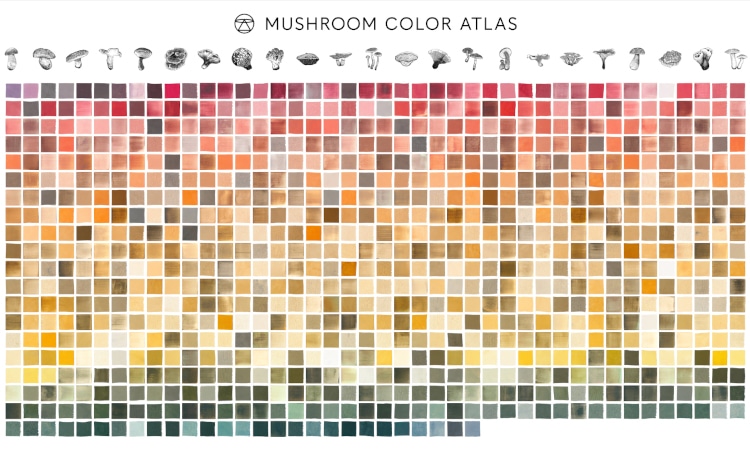
Photo: Julie Beeler
This post may contain affiliate links. If you make a purchase, My Modern Met may earn an affiliate commission. Please read our disclosure for more info.
Nature is full of color. Whether in the fur of animals, the petals of flowers, or even a swirly sky, you can go outside and find any shade you can think of. But did you know mushrooms also come in all the colors of the rainbow? Inspired by the world around us, designer, artist, and educator Julie Beeler has set out to map out their hues. This has led to the creation of Mushroom Color Atlas, which not only documents the beauty of fungi but also compiles their practical use in the realm of dye.
“The Mushroom Color Atlas is a resource and reference for everyone curious about mushrooms and the beautiful and subtle colors derived from dyeing with mushrooms,” Beeler tells My Modern Met. “But it is also the start of a journey and a point of departure, introducing people to the kaleidoscopic fungi kingdom and their connection to it.”
Beeler had been working with mushrooms for color for quite some time and was aware of their capabilities and the range of color they could produce. “I taught myself based on studying the work of Miriam Rice and Dorothy Bebee, who wrote a couple of books in the 70s and 80s,” she shares.
“What I was most interested in doing was creating a standardized process and documenting it so you could produce repeatable results when considering very specific variables. I am always in awe working with the mushrooms, the surprise and delight of what they have to offer us, how they reveal their colorants and the transformative process of making the dyes and pigments is very grounding.”
The Mushroom Color Atlas was born in the thick of the pandemic. Having retired from teaching, she saw it as an opportunity to provide an online educational resource about how to work with and use mushrooms for color. “It was the perfect combination of bringing together my love of science, art, and education as well as integrating elements of my former professional career of creating interpretive, interactive media apps, websites, and installations.”
To bring her idea to life, she started working to create all the dyes and pigments. She assembled a team comprised of Brad Johnson, Danny Rosenberg, and Yuli Gates to handle the design, programming, and illustrations.
Beeler explains that, while plant dyes and fungi dyes share similar pigment compounds, mushrooms tend to be more complex. “In general, they are more multifaceted than flowers, berries, leaves, or roots, and they react in very interesting and colorful ways when the pH of the dye bath is modified,” she says.
For example, Beeler lists a species of tooth fungi (Hydenllum and Phellodon) that contain a very special pigment compound found nowhere else in nature. And while blue is a very rare color to get from natural dyes, the Hydnellum mushrooms offer a range of natural blues.
Ultimately, Beeler hopes her Mushroom Color Atlas will inspire people “to learn more about the mycological world and begin to understand the importance of the networks, connections, and symbiotic relationships that live in our forests. Most importantly, understanding our impact on these delicate networks and our role as stewards of the land, bringing positive change to our local environments and our planet.”
The Mushroom Color Atlas is now available and can be purchased on Amazon or Bookshop.org.
Mushroom Color Atlas, a project spearheaded by Julie Beeler, maps out the myriad of colors of fungi.
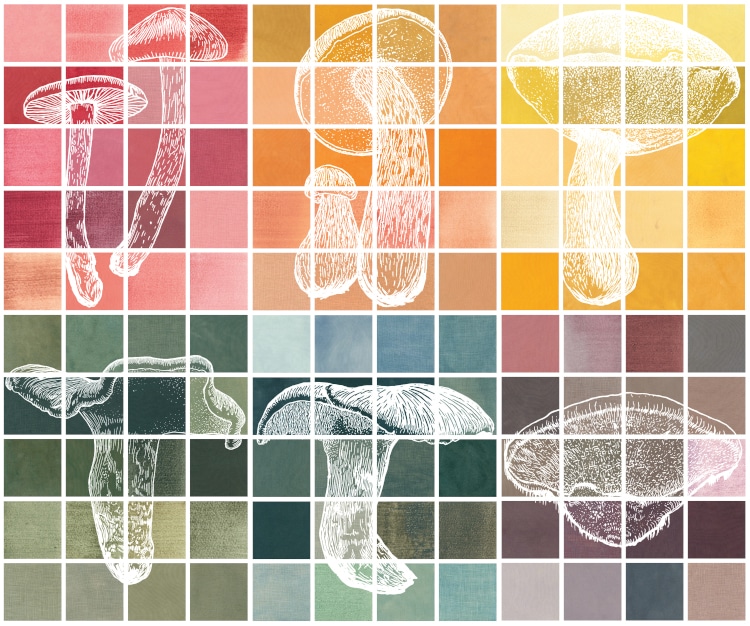
Illustration: Yuli Gates
“The Mushroom Color Atlas is a resource and reference for everyone curious about mushrooms and the beautiful and subtle colors derived from dyeing with mushrooms,” Beeler tells My Modern Met.
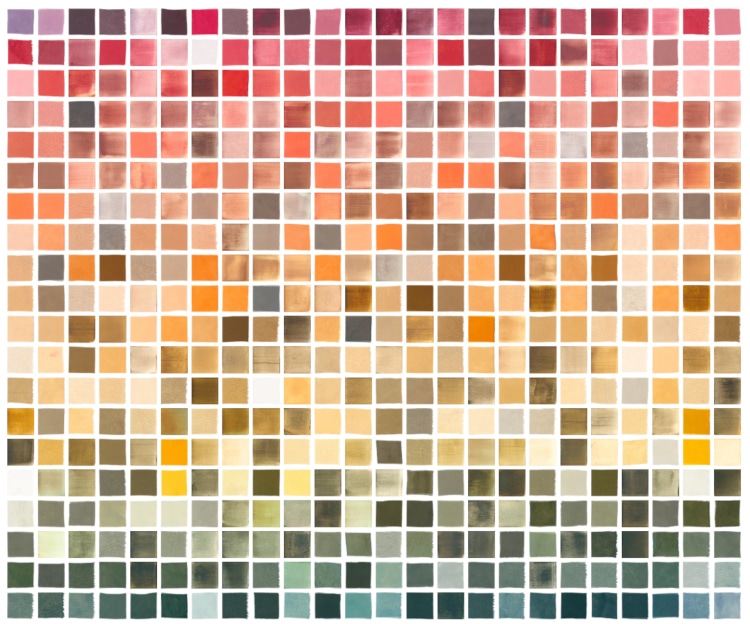
Photo: Julie Beeler
While plant dyes and fungi dyes share similar pigment compounds, mushrooms tend to be more complex, as they react in different ways.

Photo: Julie Beeler
Beeler had been working with mushrooms for color for quite some time and was aware of their capabilities and the range of color they could produce.
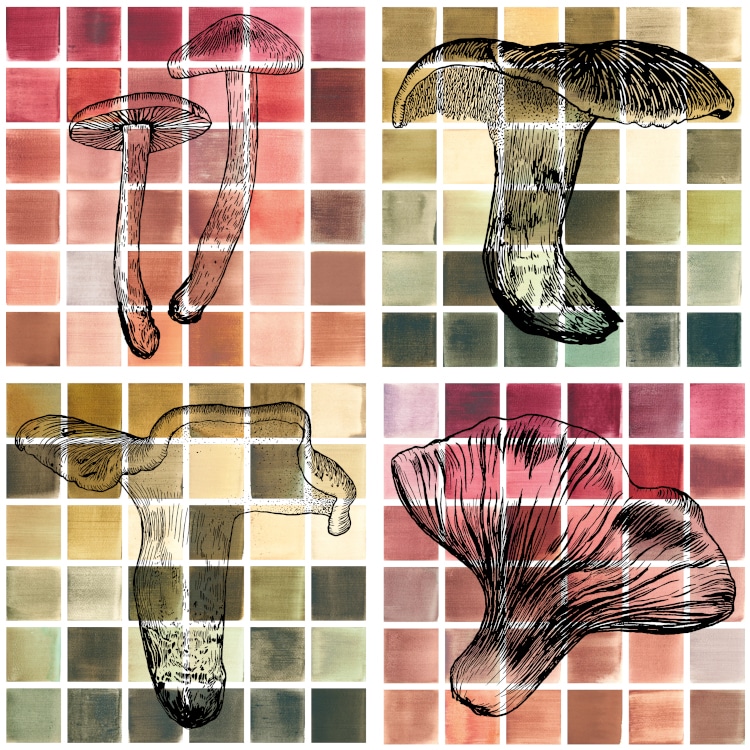
Illustration: Yuli Gates
“In general, they are more multifaceted than flowers, berries, leaves, or roots, and they react in very interesting and colorful ways when the pH of the dye bath is modified,” she says.
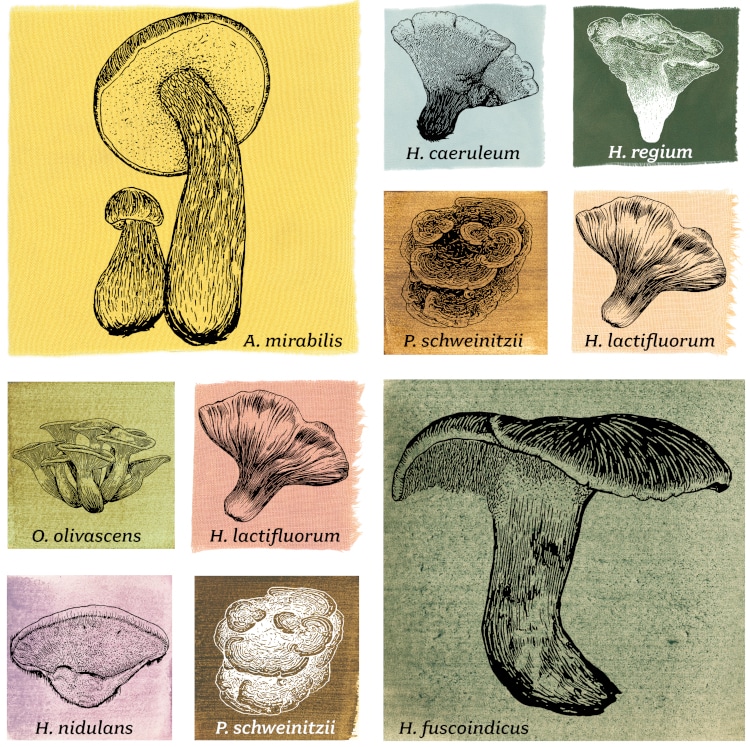
Illustration: Yuli Gates
Having retired from teaching, Beeler saw the Mushroom Color Atlas as an opportunity to provide an online educational resource about how to work with and use mushrooms for color.

Photo: Julie Beeler
To bring her idea to life, she started working to create all the dyes and pigments and assembled a team to handle the design, programming, and illustrations.
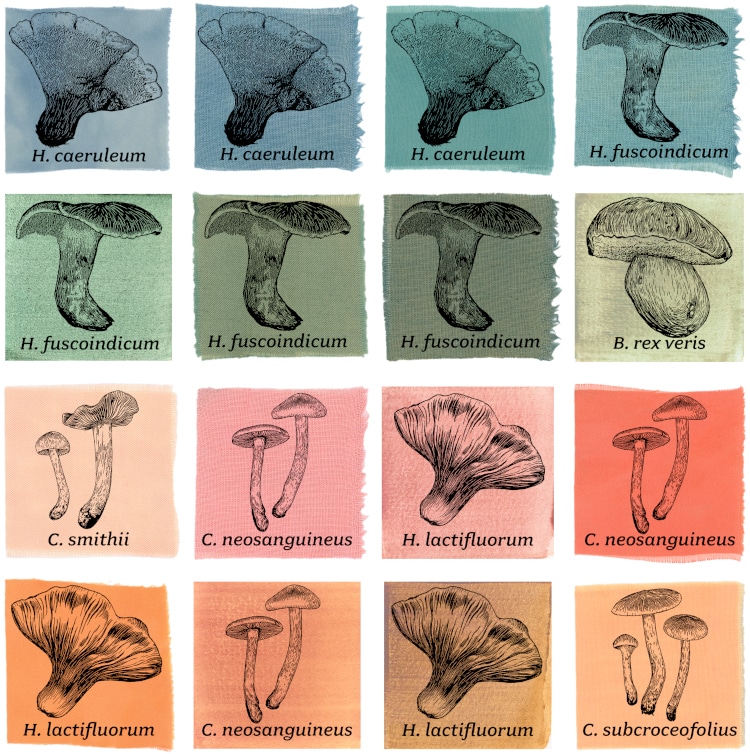
Illustration: Yuli Gates
Ultimately, Beeler hopes her Mushroom Color Atlas will inspire people “to learn more about the mycological world and begin to understand the importance of the networks, connections, and symbiotic relationships that live in our forests.”
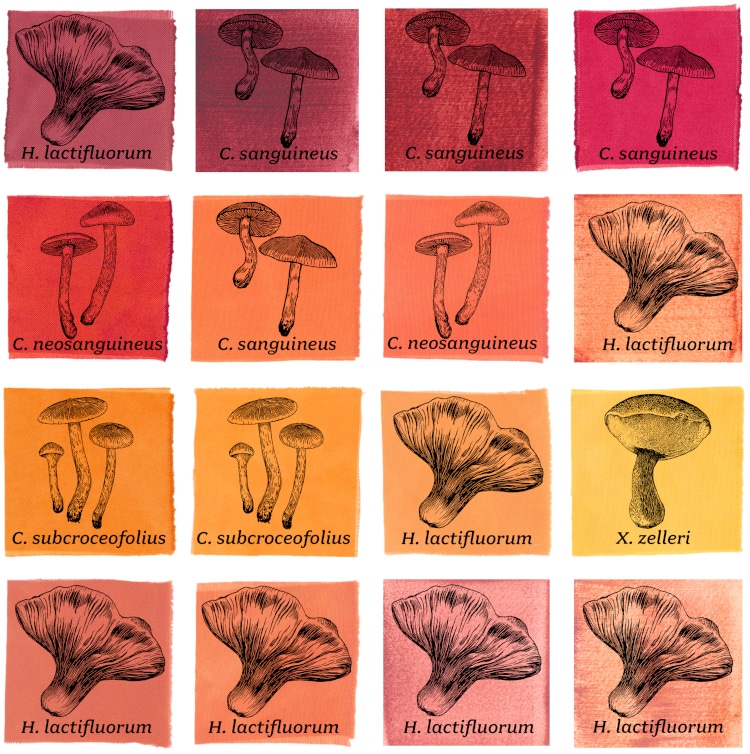
Illustration: Yuli Gates
The Mushroom Color Atlas is now available in book form.
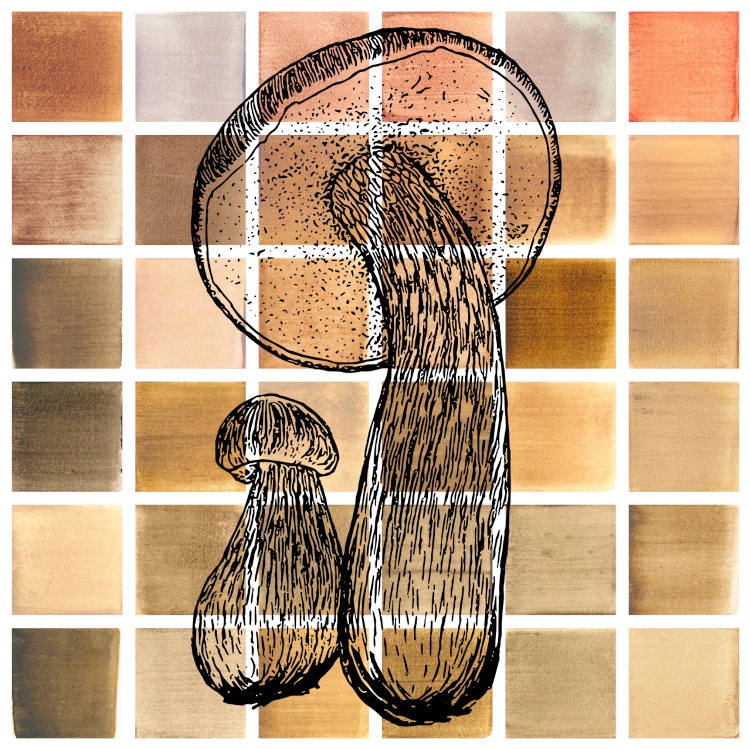
Illustration: Yuli Gates
Mushroom Color Atlas: Website | Instagram
My Modern Met granted permission to feature photos by Julie Beeler.
Related Articles:
Vibrant Fungi Photos Capture the Beauty of Nature and Nostalgic Memories of Foraging for Mushrooms
Mushrooms Have Their Own Language With Up to 50 “Words”
Bioluminescent Mushrooms in Singapore Glow in the Dark Like a “Little Galaxy” of Fungi
Illuminating Film Reveals the ‘Fantastic’ Hidden World of Mushrooms and Mycelium
